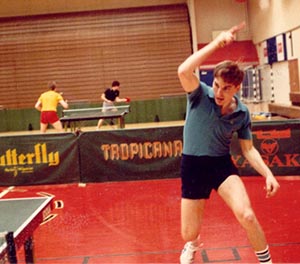Suggested Service Rule
As I've blogged a number of times, many players hide their serve illegally, and many or most umpires allow it. It's frustrating to me as kids see opponents and top players hide their serves illegally and not get called, so why shouldn't they? It's almost reminiscent of the situation baseball players faced in the steroids era.
The current rule requires that the ball be visible throughout the serve to the opponent. The problem is that it's difficult for an umpire, sitting off to the side, to tell if the ball was hidden from the receiver, since often he himself cannot even see the ball, and must estimate where it is, and judge if it is hidden or not from the server's shoulders. Since I've coached and played table tennis nearly every day for many years, I can see if the serve is hidden or not, but many umpires only see this type of thing on an occasional basis, and so have great difficulty judging it.
Technically, it shouldn't be a problem. The rules state that "It is the responsibility of the player to serve so that the umpire or the assistant umpire can be satisfied that he or she complies with the requirements of the Laws." That's pretty clear - it means if the umpire isn't sure the serve is visible, i.e. legal, then the umpire is NOT satisfied that the serve complies, and so the player should be warned (the first time) or faulted. But most umpires do not do this, and so at the higher levels many players get away with illegal hidden serves.
There are other serving problems. Many players abuse the "near vertical" toss rule, and few umpires enforce it. But the advantage of throwing the ball backwards (instead of near vertical) is minor compared to the advantage of hiding the serve. The same is true of other common transgressions.


 Photo by Donna Sakai
Photo by Donna Sakai


